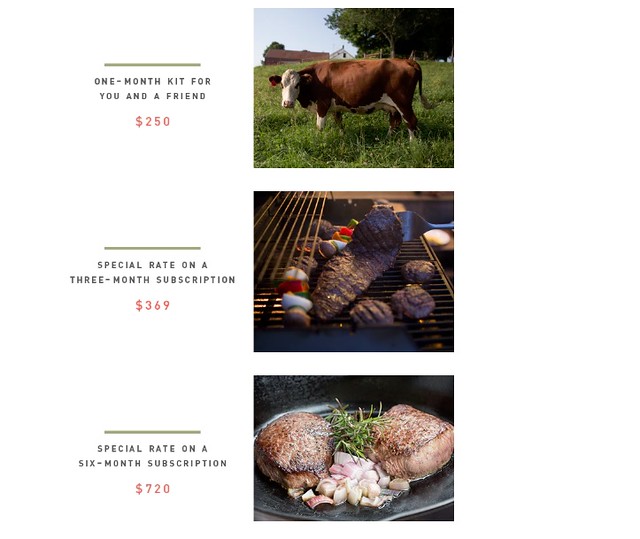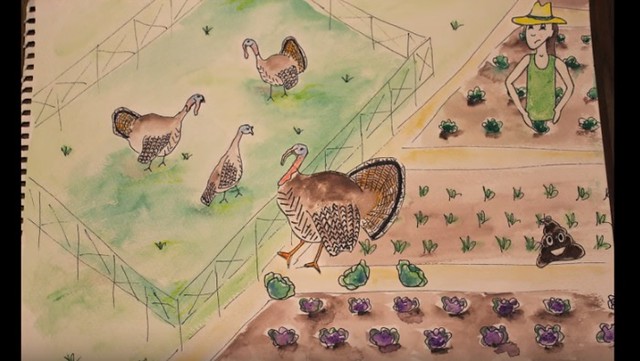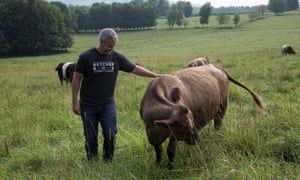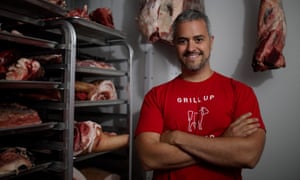http://e-info.org.tw/node/116654
國外小農善用募資網站 不愁資金和買家
文字大小
35 1 Share1

本報2016年6月30日綜合外電報導,范震華編譯;賴慧玲審校
群眾募資不只是寫作、拍電影和其他創作提案尋求資助的管道。現在,有越來越多農夫開始使用募資網站,在網路上找到願意支持農業提案的資助者。根據知名群眾募資平台Kickstarter統計,目前平台上就有超過1900個與「農場」相關的提案正在進行。
提案怎麼開始?
2012年,一對夫妻檔,米嘉(Micha)和艾德(Andrew Ide)在美國華盛頓州小城斯諾克米西(Snohomish)租了一塊12英畝大小的農地,養起綿羊、山羊、豬和火雞,打算生產符合動物福利的人道雞蛋和自然肉品。
一開始艾德夫婦養的是失去飛行能力的火雞品種,但考慮到這類火雞無法自然交配生出下一代,他們改飼養會飛的傳統品種火雞(heritage turkeys);然而,新的火雞總是飛越圍欄到其他農夫的菜園裡搞破壞,讓夫婦倆傷透腦筋。米嘉說,「但是我們實在不想把火雞關到室內雞籠裡,要不花錢找出解決之道,要不就不養火雞了。」
於是,他們設計一個移動式的「火雞隧道」,可以提供足夠空間給農場裡100隻火雞棲息、覓食和探索;隧道有屋頂可保護火雞不被獵食者抓走,同時又能避免火雞跑到其他菜園裡。但是,艾德夫婦的存款實在無法負擔這個設計所需的花費。
有別於與銀行貸款等傳統方式,艾德夫婦轉向網路世界尋找機會,今年3月,他們將自己的故事製成短片,在連結農夫、食品商和支持者的網路集資平台Barnraiser發表火雞隧道提案,向群眾募資。
Bright Ide Acres為募資提案製作的短片。 圖片來源:Barnraiser網站。
集資期限截止時,共有65位民眾支持艾德夫婦,累積資金高達5745美元(約新台幣18萬5708元)。「這些支持者中有許多是我們目前的客戶。他們除了願意花錢買我們的產品,還願意付更多的錢來支持我們的計畫,這實在是太不可思議了!」米嘉欣喜若狂地說。
募資平台連結小農與顧客
群眾募資平台諸如Kickstarter、Indiegogo、Barnraiser、GoFundMe,提供空間讓有創意但苦無足夠資金的人發表提案、在網路上尋找支持者資助,好讓這些創新好點子能夠成形。獲得資助的農夫創意家,通常則以自製T-shirt、農產品、農場小旅行等作為答謝支持者的報償。
Kickstarter的羅梅洛(Terry Romero)指出:「當代農村的趨勢是農夫高齡化,農田消失或被大型農企業收購。募資平台則反其道而行,讓民眾有機會實際支持在地、小規模的家庭農場。」
雖然Kickstarter沒有調查由農夫提出的募資方案件數,但根據其以主題分類做出的統計結果,自2009年以來,與食物相關的募資提案共有1萬9902個,是Kickstarter裡15個主題類別中的第6名;其中,約有1/4的案件成功集資,共有4942件。而據英國衛報4月的報導,2015年甫成立的募資平台Barnraiser,就有40%的提案與農業相關,平均每個提案可募得資金9000美元(約新台幣29萬元)。
向銀行借貸雖然可以得到資金,前提是農民能出示相關銷售能力和資產作為借貸保證,然而,這通常是小農或新農所欠缺的。群眾募資平台除了幫助提案者籌資,另外一方面,也在提案過程建立消費者對產品的支持度。
Barnraiser創立者兼執行長高登(Eileen Gordon)表示,「募資平台讓農夫與顧客能建立直接的關係。」
如果你想測試創新構想,群眾募資是個好方法
企業家沙古羅(Mike Salguero)也有個新點子,他想和放養草飼牛的牧場建立夥伴關係,發起每月認購的「肉販箱子」(Butcher Box)服務,「我愛死這個想法了,但我不確定大眾是否接受。」2015年9月,沙古羅在Kickstarter提案測試這個創新的構想,預計募集2萬5000美元的資金。

Butcher Box 提供給資助者的回饋品。圖片來源:截圖自Kickstarter網站。
沙古羅知道要獲得支持,必須讓消費者對這個提案感到興趣。因此,凡是資助129美元的民眾,就能得到1箱牛肉的回饋,如果支持超過1399美元,便能獲得為期一年的每月牛肉宅配。結果,在30天的募資期限過後,共有1155位支持者資助超過21萬美元的資金。
「賓果,我們押對寶了!這證明這個計畫有強大的需求市場。」沙古羅說。在接下來的六個月,他進一步和四個農場合作,在肉販箱子裡加入有機雞肉和放養豬肉產品,且全美都能宅配到府。
「農民對這個概念感到非常興奮,因為這讓在地的小農有機會打入全國市場的機會。」沙古羅說,「農民在飼養和耕作階段總是負債累累,收成後還不保證產品都能賣得出去,而群眾募資改變了這個現況,也可能激發出更多有趣的農場和食品提案。」
編註:台灣從2011年開始有群眾募資案例出現,至今有13個分別著重在不同領域的募資平台誕生。其中,不乏與農業相關的募資成功案例,例如「白色的力量:自己的牛奶自己救」提案,就協助小農成立自有品牌;2015年,農委會也曾與募資平台合作舉辦集資競賽,協助民眾讓好點子成形。
而根據3月份由貝殼放大公司提出的台灣群眾集資報告,2015年共有501件專案集資成功,其中以社會公益、文藝展演、設計商品為大宗。(參考資料:「貝殼放大報告:台灣群眾募資平台密度全球最高,去年總集資 5 億台幣」)
※ 本文轉載自環境通訊網
【延伸閱讀】
【相關文章】
【參考資料】
- 英國衛報(2016年4月19日),Herdfunding: how the internet is raising money for farms
- Kickstarter
Herdfunding: how the internet is raising money for farms
Instead of approaching banks, small, local farms are finding cash and loyal fans online
When Micha and Andrew Ide started Bright Ide Acres, a farm producing ethical eggs and meat in Snohomish, Washington, in 2012, the couple bootstrapped their startup costs.
Raiding their savings accounts, they leased a 12-acre parcel of land, installed fencing and purchased chickens, sheep, goats, pigs and turkeys. The couple began raising turkey breeds that were too heavy to fly, but demand grew for heritage turkeys which are flightly, and the birds started escaping from their portable electric fencing into other farmers’ vegetables fields.
“We didn’t want to switch to an indoor production model but we couldn’t let them keep getting out,” says Micha Ide. “It was either find a solution and raise the money or stop raising turkeys.”
The couple designed a “turkey tunnel” that provides enough space for their flock of 100 heritage turkeys to roost, forage and explore. It has a roof that keeps them safe from predators and out of the vegetables. The tunnel can be hooked up to a winch and moved to fresh pasture, allowing the turkeys to graze. But, at $4,000 (£2,800), it wasn’t something the Ides could fund from their savings account.
Instead of approaching the bank for a loan, however, they turned to the internet, raising nearly $4,980 (and counting) through a crowdfunding campaign onBarnraiser, a platform designed to connect farmers and food entrepreneurs to backers. With a few days to go until the campaign closes, the couple is thrilled that 60 backers have stepped up to support them.
“We’ve had so many of our current customers contribute, which blew me away because they’re already paying for our meat and the fact that they’re willing to pay more to support the farm is amazing,” says Micha.
Crowdfunding platforms such as Kickstarter, Indiegogo, Barnraiser and GoFundMe allow creators to post profiles of their projects online and seek funding from backers to bring the projects to life. To acknowledge their support, farmers offer rewards that can range from T-shirts and produce to farm tours.
More than $34bn in financing was raised through crowdfunding in 2015 via 1,250 active crowdfunding platforms worldwide, according to data from research firm Massolution.
While crowdfunding has long been the provenance of writers, filmmakers and other creatives, a growing number of farmers are turning to it to support sustainable agriculture projects.
“We hear about farmers getting older and farms disappearing or getting taken over by Big Ag,” says Terry Romero, outreach lead at Kickstarter. “Crowdfunding is the opposite to that. It gives people the opportunity to support small, local, family farms in a very tangible way.”
Kickstarter doesn’t track the number of farmers who have launched crowdfunding campaigns, butreports that 19,064 projects in the food category have been launched since the platform’s inception in 2009. Currently, a search for “farm” turns up 1,871 campaigns on the site.
According to Barnraiser, which was founded in 2015, some 40% of campaigns on the platform are farm-related and generate an average of $9,000.
While bank loans can bring in funds – assuming farmers can show sales and assets to qualify, which is often challenging for small farms or new farmers – they don’t guarantee customer support. Crowdfunding builds customer support into the model. “It’s great for building direct-to-consumer relationships,” says Eileen Gordon, founder and CEO of Barnraiser.
Entrepreneur Mike Salguero came up with the idea to partner with ranches producing grass-fed beef to start a monthly subscription service calledButcherBox. He turned to Kickstarter to test the idea. “I loved it but I wasn’t sure it was a service other people would use,” he says.
Last September, ButcherBox launched a Kickstarter campaign with a goal of $25,000. For a contribution of $119, backers were promised one ButcherBox filled with beef; those who contributed $1,399 or more received a one-year subscription of monthly meat deliveries.
Salguero knew that the number of backers would correlate to consumer interest in the idea; during the 30-day campaign, 1,155 backers contributed $210,203. “It was very clear we struck a nerve and there was a huge demand for this,” he says.
In the last six months, ButcherBox has added organic chicken and pastured pork to its subscription offerings, partnering with four farms to ship boxes of meat to customers nationwide.
“The farmers were very excited about the concept because it gives them exposure to a national market,” says Salguero. “Farmers have a lot of cash tied up in raising animals [and crops] and there’s no guarantee of a market; crowdfunding changes that. It’s one of the reasons it’s going to continue growing and becoming more interesting for farm and food projects.”
“The farmers were very excited about the concept because it gives them exposure to a national market,” says Salguero. “Farmers have a lot of cash tied up in raising animals [and crops] and there’s no guarantee of a market; crowdfunding changes that. It’s one of the reasons it’s going to continue growing and becoming more interesting for farm and food projects.”





沒有留言:
張貼留言